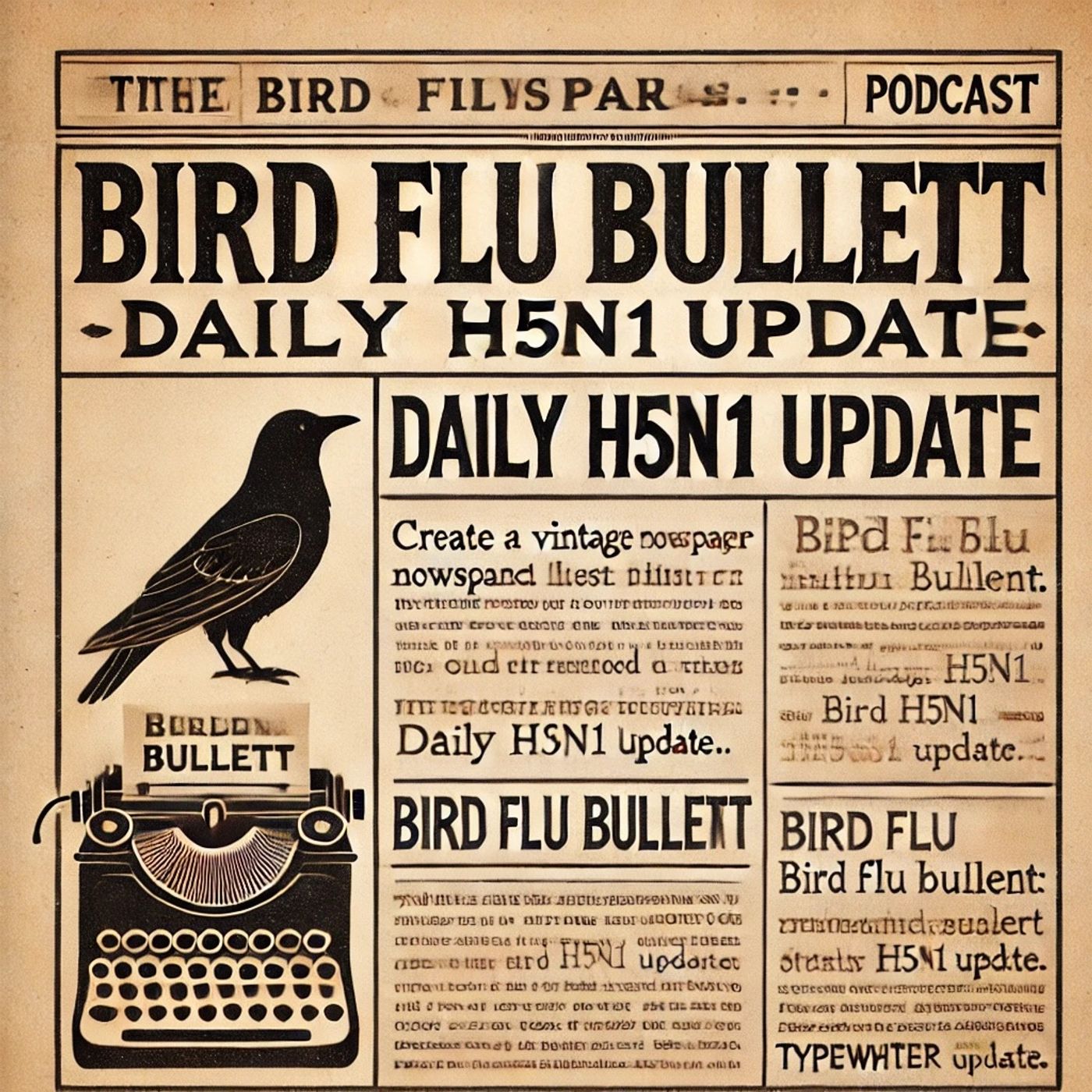Podcast Episode Details
Back to Podcast Episodes
Bird Flu H5N1 Cases Rise in UK and Cambodia as Global Health Experts Urge Continued Vigilance in 2025
This is Bird Flu Bulletin: Daily H5N1 Update for Saturday, August 9, 2025.
Top stories today:
First, the United Kingdom has reported its 77th outbreak of highly pathogenic avian influenza H5N1 in commercial poultry, following confirmation at a site in Norfolk. According to the UK government, containment zones have been established, and the latest cases make up the largest cluster seen in several months. Importantly, authorities note that strict biosecurity protocols remain in place to prevent further spread.
Second, Cambodia has identified one new human infection with H5N1 in the last twenty-four hours, raising the country’s total to 15 cases for the year, with eight deaths. All confirmed patients had recent contact with infected poultry. The Centers for Disease Control and Prevention highlights that so far, no person-to-person transmission has been observed in these cases, maintaining the global health risk to the general public at low levels. However, these infections underscore the need for strong surveillance and rapid response.
Third, on the animal front, the Food and Agriculture Organization has announced that, as of today, five additional outbreaks of H5N1 have been officially reported in Southeast Asia and Europe. These outbreaks include both poultry and wild bird populations, according to the latest update from national agriculture ministries. The World Organisation for Animal Health continues to advise timely reporting and sharing of viral samples as a strategy to reduce risks of viral reassortment and potential spread to humans.
Looking at the numbers, the global tally of confirmed human H5N1 cases in 2025 has increased by one since yesterday, now standing at 27 cases since January 1. Deaths this year remain at 12 worldwide, with no new fatalities reported in the last day. The United States, which saw three cases earlier this year, has not reported any new infections since mid-February.
Turning to guidance, the CDC stresses that the general public still faces a low risk from H5N1, but urges those who work directly with poultry or wild birds to use personal protective equipment and follow hygiene protocols, as the majority of recent cases have involved direct contact with infected animals. The agency also advises ongoing monitoring for flu-like symptoms in people exposed to sick or dead birds, emphasizing early detection as a key to containment.
For our expert perspective today, Dr. Mira Gonzalez, a virologist at the FAO, shared insights: “While bird-to-human transmission events remain rare, constant surveillance is essential. The current viral strains circulating in poultry and wild birds show genetic diversity, but we have not detected sustained human transmission. Farmers and workers should remain vigilant and report clusters of illness promptly.”
Looking ahead to tomorrow, several health ministries in Southeast Asia and Europe are expected to release updated data from intensive poultry surveillance operations. The CDC is also scheduled to hold a press briefing to address public questions about bird flu risk ahead of the autumn migration season, when wild bird movements could affect virus spread.
Thank you for tuning in to Bird Flu Bulletin: Daily H5N1 Update. Come back next week for more critical news. This has been a Quiet Please production. For more, check out Quiet Please Dot A I.
For more http://www.quietplease.ai
Get the best deals https://amzn.to/3ODvOta
Published on 2 weeks ago